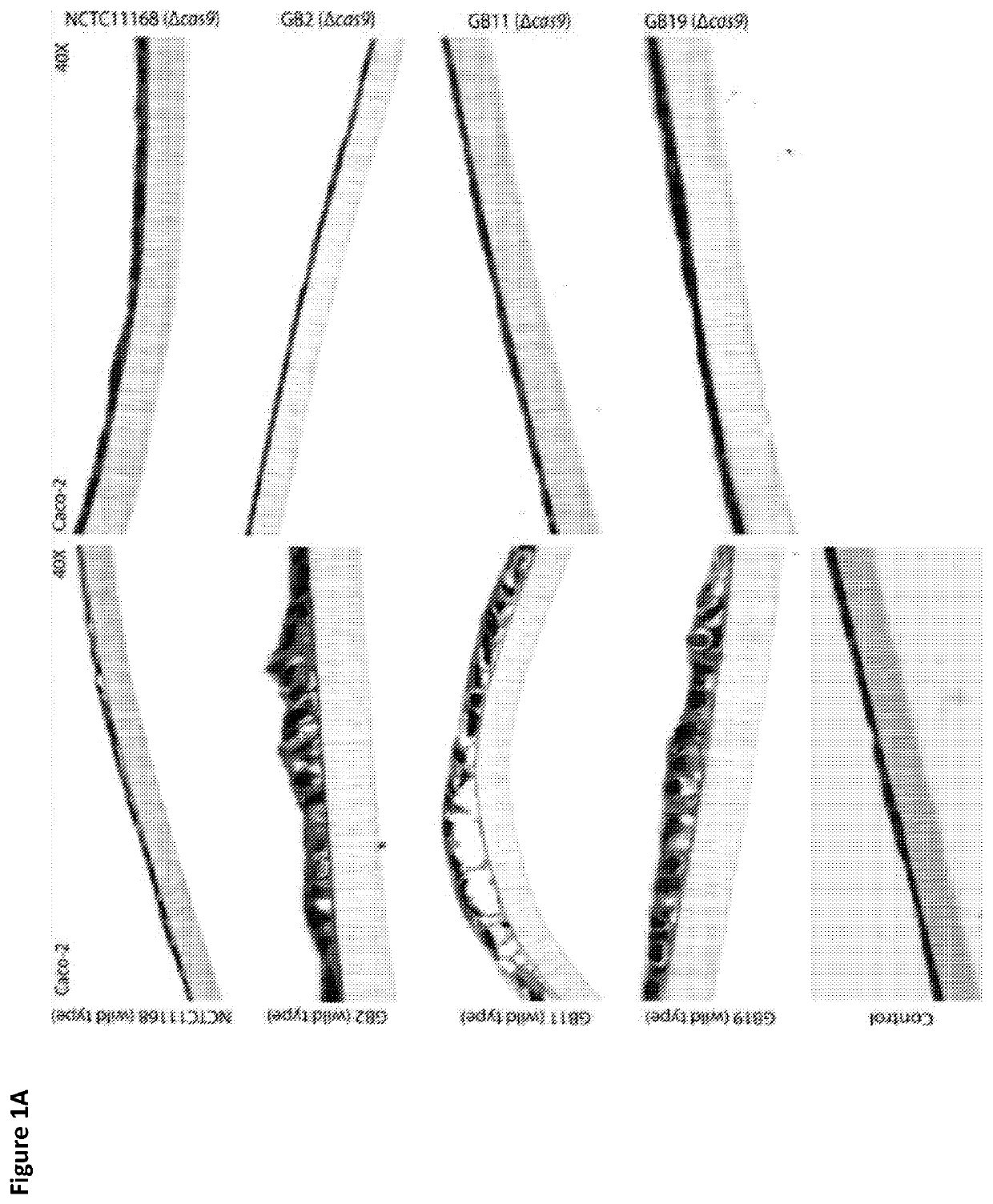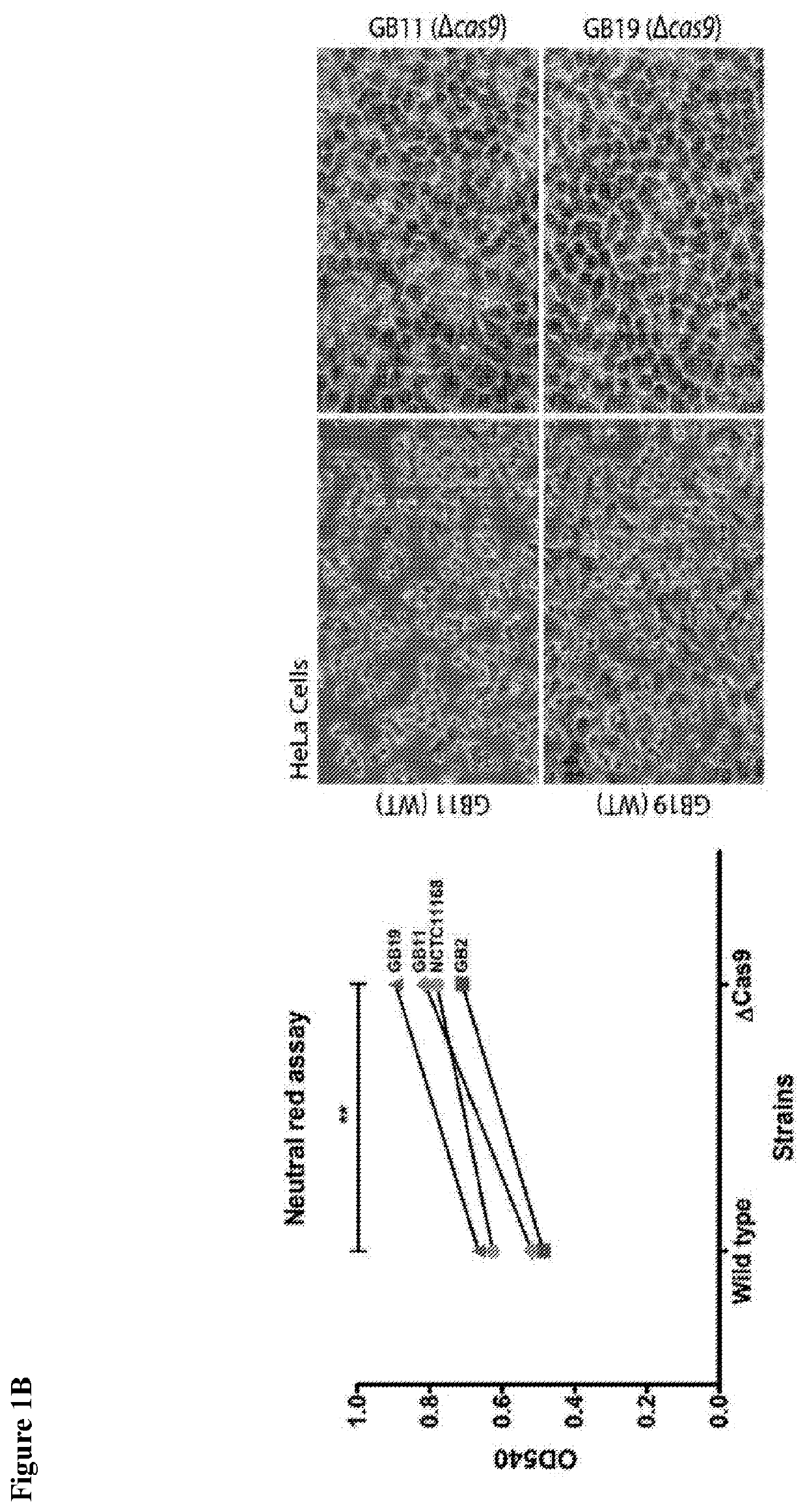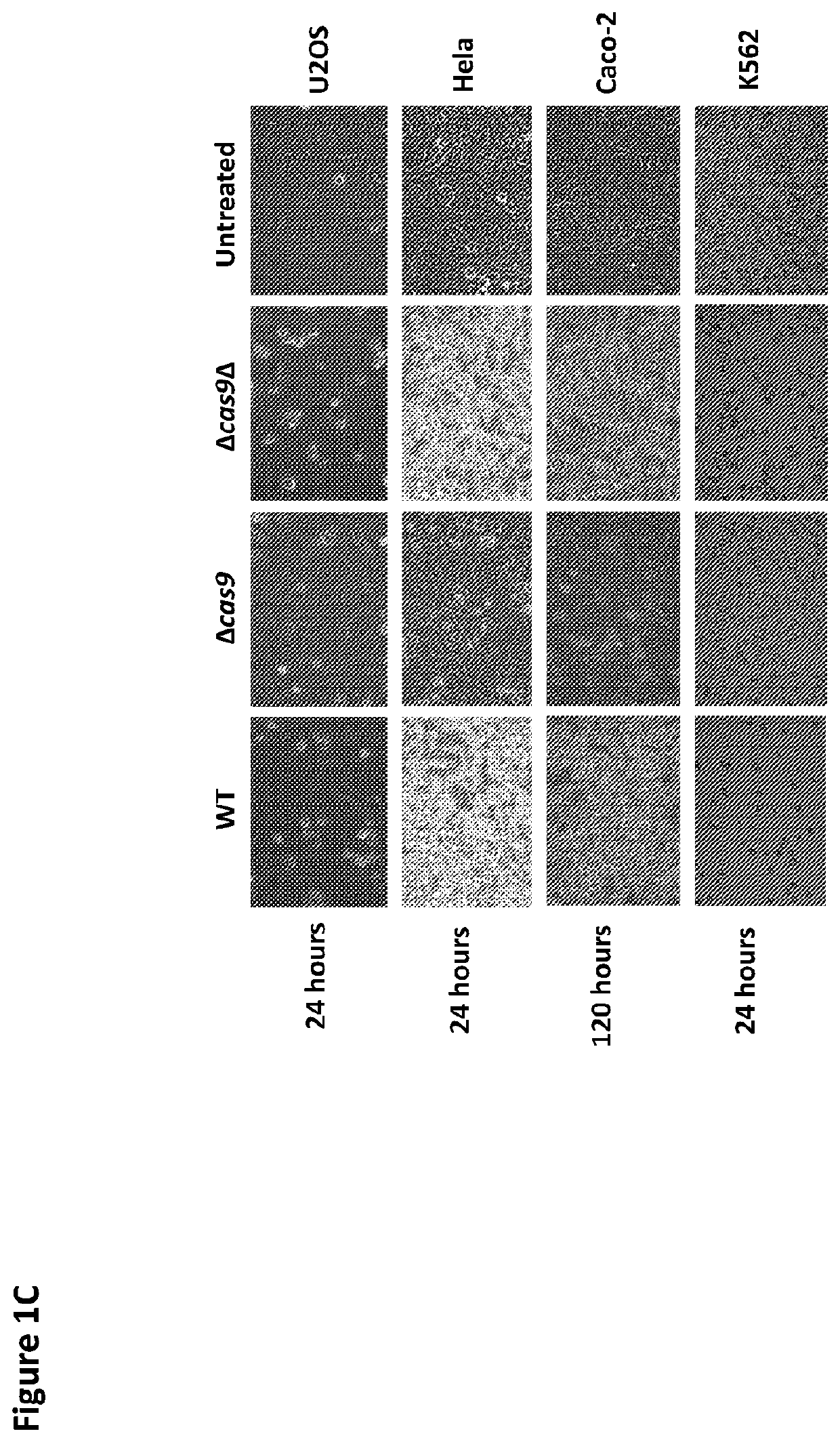Improved CRISPR-Cas9 Genome Editing Tool
a genome editing and genome technology, applied in the field of genetics, can solve problems such as off-targeting mutagenesis
- Summary
- Abstract
- Description
- Claims
- Application Information
AI Technical Summary
Benefits of technology
Problems solved by technology
Method used
Image
Examples
example 1
Campylobacter jejuni Cas9 is a Virulence Factor and able to Induce Cell Death
[0143]Campylobacter jejuni wild-type strains GB2, GB11, GB19, NCTC11168 and their Δcas9 (csnl) mutant variants were studied; A) adhesion onto; B) invasion into; and C) translocation across human Caco-2 cells. Colony forming units (CFU) were calculated per ml. Data are expressed as the standard error of the mean (SEM) of three independent experiments, each performed in duplicate; D) Cytotoxic effects of GB2, GB11, GB19, NCTC11168 and their Δcas9 (csn1) mutant variants on HT-29 cells were measured at OD490nm visualizing the lactate dehydrogenase (LDH) release in cell culture supernatants. The data are expressed as the SEM of triplicate determinations performed in triplicate. Significant differences between wild-type and Δcas9 (csnl) mutants were observed. In the adhesion and invasion assay, this significance was *p<0.05 and in the translocation and cytotoxicity assays *p<0.01 using a paired t-test between wil...
example 2
Cas9 Positive Campylobacter jejuni Isolates damage Eukaryotic Cells
[0144]A) Caco-2 intestinal epithelial cells were seeded onto Transwell filters at 4×105 cells / filter (5-pm pore size, 1.13 cm2; Costar, Corning Inc., Corning, New York, USA) and allowed to differentiate and form tight junctions for 19 days. After 7-10 days of culture, the transepithelial electrical resistance (PEER) was >1,000 Ω / cm2, indicating the presence of an intact epithelial monolayer. Campylobacter jejuni isolates were added at a multiplicity of infection (MOI) of 10 to the apical surface of the Transwell filter at day 19. After 24 hours, Transwells were rinsed with PBS at 37° C. and fixated with 4% paraformaldehyde for 1 hour. Transwells were washed in 70% ethanol and dehydrated in 70% ethanol (2×15 minutes), 96% ethanol (2×20 minutes), 100% ethanol (1×10 minutes and 2×20 minutes) and 1 butanol (1×20 minutes and 2×30 minutes). Membranes were embedded in paraffin (Sigma-Aldrich, Zwijndrecht, The Netherlands) a...
example 3
Cas9 Induces DNA Damage and Apoptosis Pathways
[0145]Caco-2 intestinal epithelial cells were incubated with wild type or a Δcas9 Campylobacter jejuni strain and RNA was extracted using Trizol (Sigma-Aldrich, Zwijndrecht, The Netherlands) and hybridized to human whole-genome gene expression microarrays (Affymetrix, Charleroi, Belgium). To capture the induction or silencing of different pathways at specific time points, RNA was extracted at five time points within four hours and for each time point three replicates were obtained. The time points were rationally chosen based on earlier microscopic analysis of Caco-2 infection by different Campylobacter jejuni bacteria (Louwen et al., IAI, 2012). From this assay it became evident that Cas9 alters DNA and chromatin dynamics, and gene expression, via a DNA damage mechanism(s) that is perceived by ATM and signaled via p53-MAPK pathways leading to apoptosis, but not in the Δcas9 Campylobacter jejuni strain (FIG. 2).
PUM
| Property | Measurement | Unit |
|---|---|---|
| dissociation constant | aaaaa | aaaaa |
| dissociation constant | aaaaa | aaaaa |
| dissociation constant | aaaaa | aaaaa |
Abstract
Description
Claims
Application Information
 Login to View More
Login to View More - R&D Engineer
- R&D Manager
- IP Professional
- Industry Leading Data Capabilities
- Powerful AI technology
- Patent DNA Extraction
Browse by: Latest US Patents, China's latest patents, Technical Efficacy Thesaurus, Application Domain, Technology Topic, Popular Technical Reports.
© 2024 PatSnap. All rights reserved.Legal|Privacy policy|Modern Slavery Act Transparency Statement|Sitemap|About US| Contact US: help@patsnap.com










